According to the existing photovoltaic power generation projects on the market, combined with different application scenarios, solar photovoltaic power generation systems can be roughly divided into five types: grid-connected power generation systems, off-grid power generation systems, grid-connected and off-grid energy storage systems, and grid-connected energy storage systems and a variety of energy hybrid micro-grid systems.
Grid-connected power generation system
It consists of components, grid-connected inverters, photovoltaic meters, loads, bidirectional meters, grid-connected cabinets and grids.
The direct current generated by sunlight is converted into alternating current through the inverter, and then supplied to the load and connected to the grid. It can be directly used for household loads, and the excess electricity can also be sold into the grid, but the grid-connected inverter is generally a boost and inverter two-pole structure.
- Connected to the grid, and part or all of the electricity is uploaded to the grid.
- The power grid is cut off, and photovoltaic power generation is also stopped. Because the inverters have anti-islanding, that is to say, the power grid company requires that if the power grid fails, the photovoltaic power must also be cut off immediately. Mainly security considerations.
- Residents still rely on city electricity at night.
- There is no energy storage device.
Off-grid power generation system
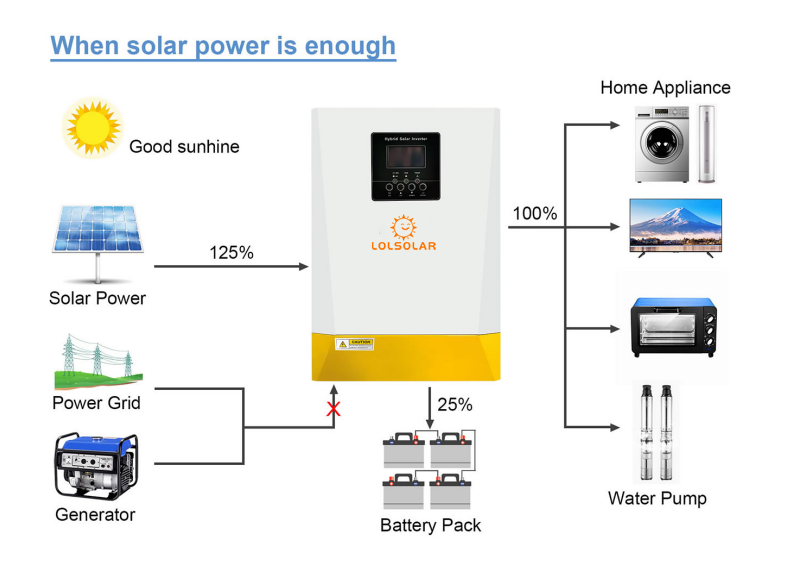
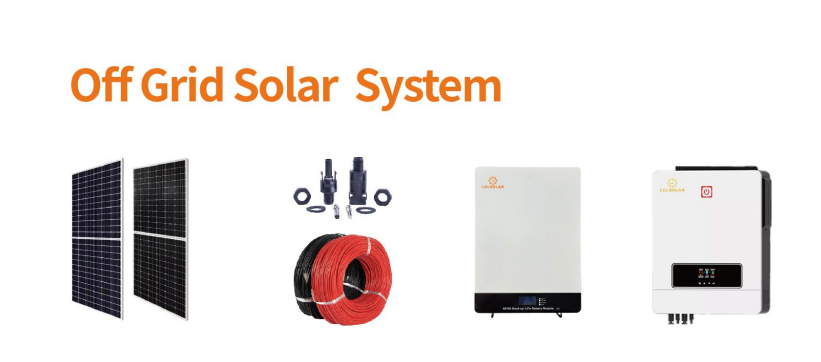
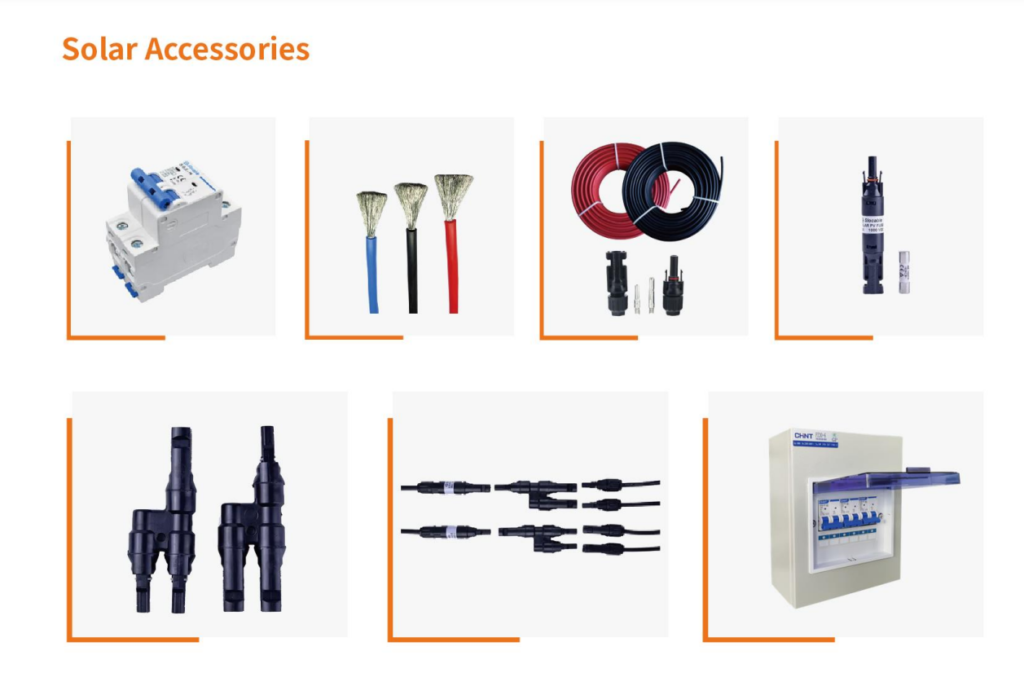
It consists of photovoltaic modules, solar controllers, inverters, batteries, loads, etc. It operates independently without relying on the power grid, and is generally used in remote areas, areas without electricity, islands, communication base stations, and street lights.
In the case of light, the solar energy is converted into electric energy, and the load is supplied by the solar controller integrated machine, and the battery is charged (please pay attention to: communication power supply person); when there is no light, the power of the battery can be supplied to the AC through the inverter power supply to the load. The cost of the battery accounts for 30%-50% of the off-grid power generation system, and the off-grid inverter generally has a four-level structure of controller, boost, inverter, and isolation.
- An independent system that does not depend on the grid. That is to say, no matter whether there is mains power or not, as long as there is sufficient sunlight, the off-grid system can work independently and provide power independently.
- There are energy storage devices. That is to say, a battery is needed, otherwise it cannot work at night or on a rainy day.
Lolsolar off-grid energy storage system
It is composed of photovoltaic modules, solar energy and off-grid integrated machine, battery, load, etc. It is widely used in scenarios such as frequent power outages or photovoltaic self-use without surplus electricity, self-use electricity price is more expensive than on-grid electricity price, peak electricity price is more expensive than valley electricity price, etc.
The photovoltaic array converts solar energy into electrical energy under the condition of light, and supplies power to the load through the solar controller inverter integrated machine, and at the same time charges the battery; when there is no light, the battery supplies power to the solar controller inverter integrated machine. Then supply power to the AC load function (please pay attention to: communication power supply people). Dual mode switching to ensure power supply requirements.
Photovoltaic grid-connected energy storage system
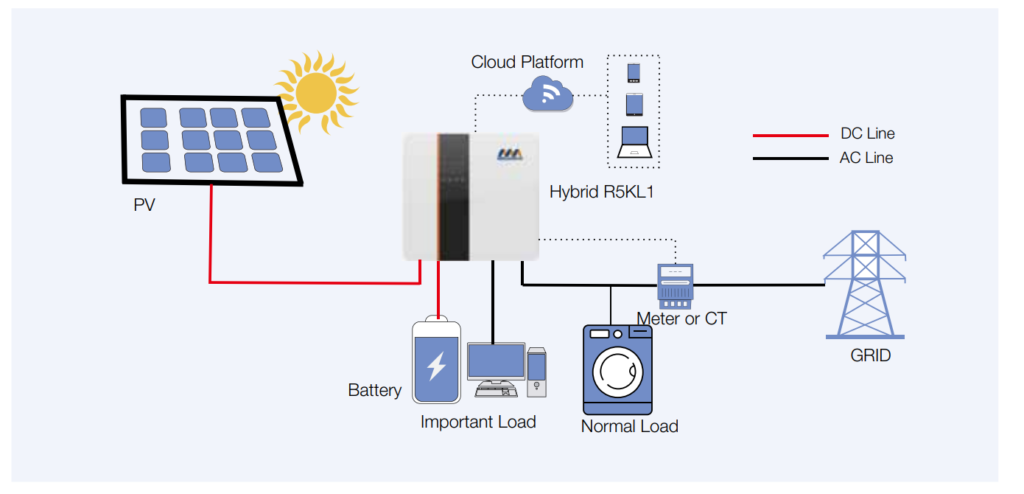
It consists of photovoltaic modules, solar controllers, batteries, grid-connected inverters, current detection devices, loads, etc. It can increase the proportion of spontaneous self-use.
When the solar power is less than the load power, the system is powered by the solar energy and the grid together. When the solar power is greater than the load power, the solar power supplies the load while storing the excess electricity through the inverter.
Microgrid system
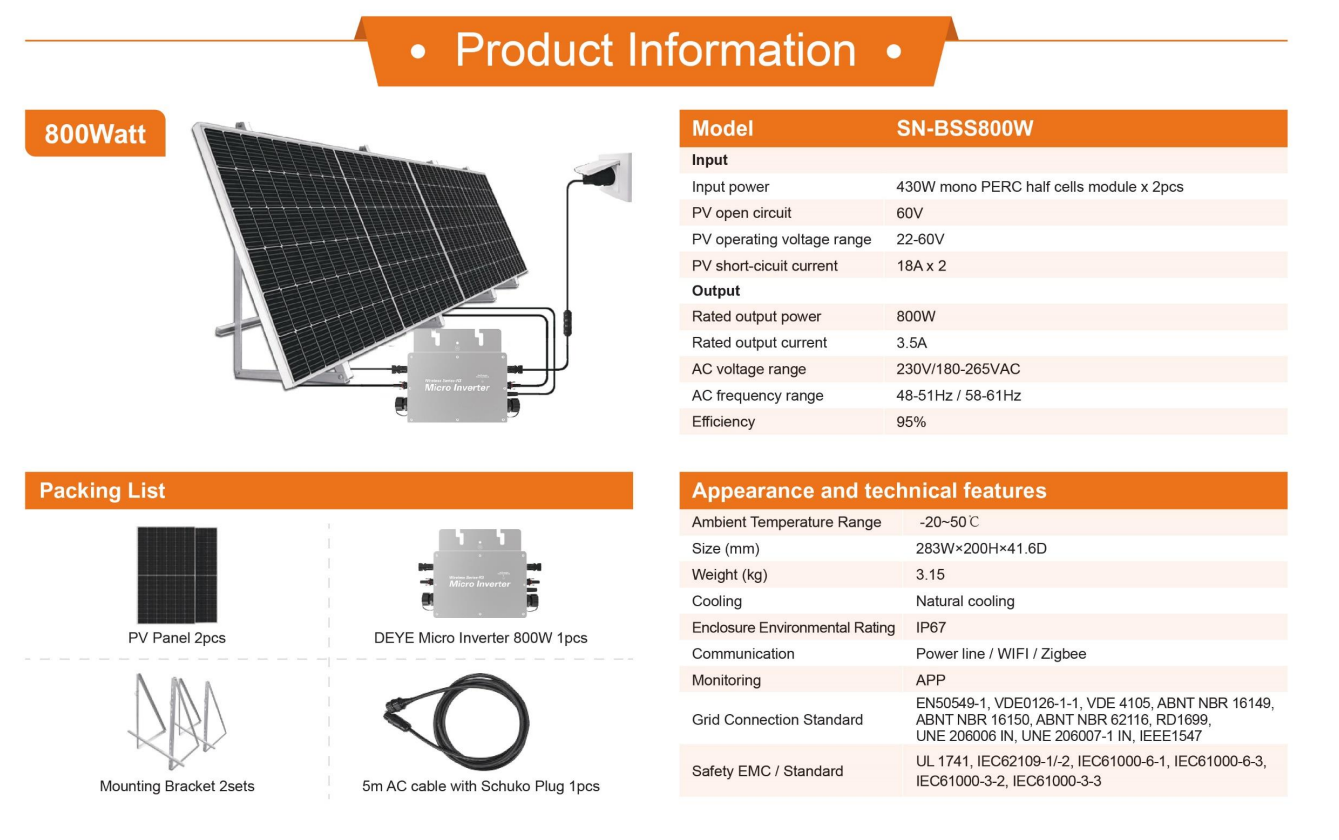
A power distribution network composed of distributed power sources, loads, energy storage systems and control devices. The distributed energy can be converted into electrical energy on the spot, and then supplied to the local load nearby.
The microgrid system is an autonomous system capable of self-control, protection and management. It can not only be connected to the external power grid, but also can operate in isolation, which greatly solves the problem of distributed power grid connection and promotes the integration of distributed power The large-scale access to renewable energy is an efficient supply of multiple forms of energy for the load, and a smart grid system that realizes the active distribution network (please pay attention to: communication power people).
Secondly, let’s talk about the difference between photovoltaic grid-connected and off-grid?
Photovoltaic lolsoalr grid-connected systems rely on the grid and adopt the working mode of “spontaneous self-use, surplus electricity connected to the grid” or “full grid grid”, while off-grid systems do not depend on the grid, relying on “storage while using” or “store first and use later”. working mode.
Name: Job
Shenzhen Lolsolar New Energy Technology Co.,Ltd
Phone: +86 13279529807
Email: job.wang@lolsolar.com
Website: www.lolsolar.net